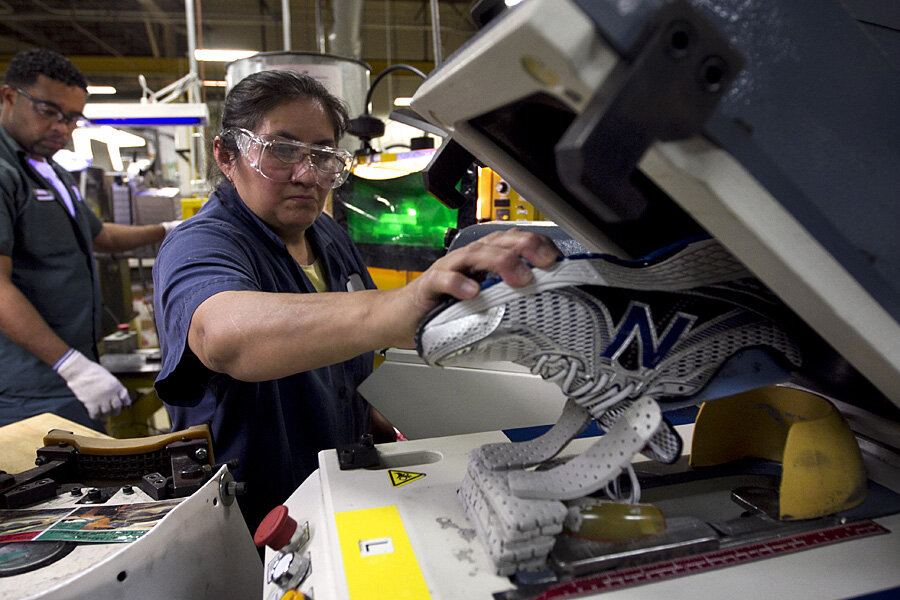Economy shrinks 2.9 percent, worst drop in five years. But why worry?
Loading...
Many experts expected the US economy to have a few fits and starts at the outset of the year, with unexpectedly bad winter weather hampering growth and spending in a range of industries. But the first three months of 2014 turned out to be far worse than most would have guessed.
US gross domestic product shrank 2.9 percent in the first quarter, a big downward revision from the 1 percent contraction previously reported, the US Commerce Department said Wednesday. Economists had expected a revision, but only to 1.8 percent, according to Bloomberg.
It was the worst quarterly performance since the first quarter of 2009, when the economy shrank 5.4 percent at the onset of the Great Recession.
“This is an unusually large range for the three monthly GDP readings,” Doug Handler, chief US economist for IHS Global Insight, writes via e-mailed analysis.
In addition to the weather, which helped slow consumer spending from a predicted 3.1 percent increase to just 1 percent, a drop in health-care spending played a major role. Mr. Handler, however, warns that the drop might be mostly due to changes in how those costs are calculated as a result of the Affordable Care Act.
“Previously, the GDP estimates had been based on Medicaid benefits and Affordable Care Act insurance exchange enrollments, among other sources,” he writes. “A reasonable inference from all the data is that many of the new enrollees were already receiving healthcare services and therefore did not materially add any additional economy-wide consumption in the first quarter.”
Medical services consumption fell from a 9.1 percent annualized growth to a 1.4 percent annualized contraction, according to Barclays Research. Because of the volatility of the new health-care spending calculations, Handler warns that they could be unreliable in measuring GDP.
“While healthcare represents a sizable portion of GDP, its quarter-to-quarter movements should be discounted in any analysis of overall economic growth,” he writes.
Business exports and shrinking inventories further contributed to the drop. Exports fell 8.9 percent, when analysts had been an expecting a 6 percent fall.
Still, the report is no harbinger of economic doom. Analysts view the contraction as more of a hiccup borne out of temporary factors, and all signs point to a robust rebound for the rest of the year.
The disappointing first quarter result, “has been rapidly overtaken by more up-to-date survey data, which show the economy surging in June,” MarkIt economist Chris Williamson writes via e-mailed analysis. “US business activity, new orders and employment [are] surging higher in June, all growing at the fastest rates seen since the recession. The survey data add to evidence that the economy rebounded strongly in the second quarter after the larger than previously estimated contraction of GDP in the first quarter."
Indeed, GDP is widely expected to rebound and expand between 3 and 4 percent in the second quarter of 2014.








